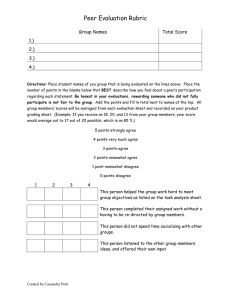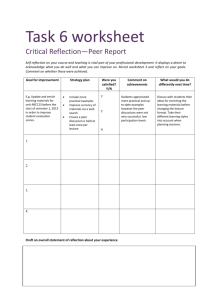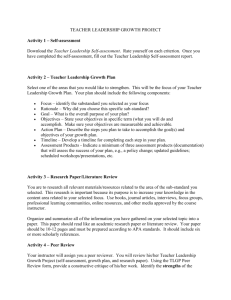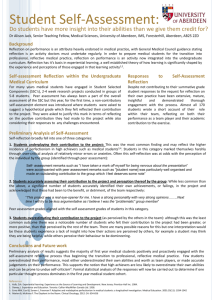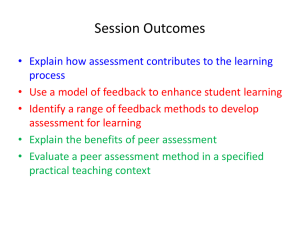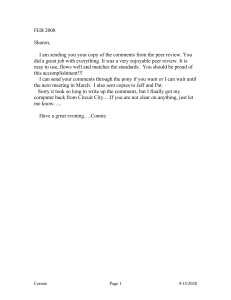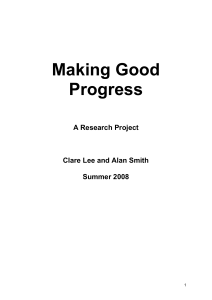Peer and Self Assessment
advertisement
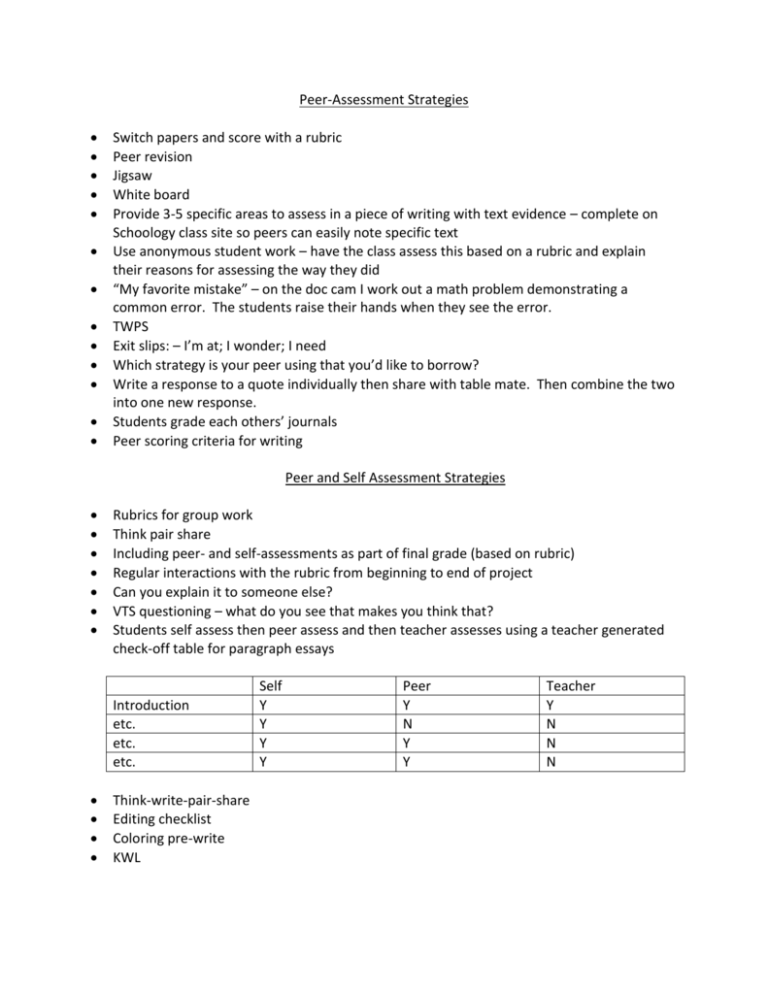
Peer-Assessment Strategies Switch papers and score with a rubric Peer revision Jigsaw White board Provide 3-5 specific areas to assess in a piece of writing with text evidence – complete on Schoology class site so peers can easily note specific text Use anonymous student work – have the class assess this based on a rubric and explain their reasons for assessing the way they did “My favorite mistake” – on the doc cam I work out a math problem demonstrating a common error. The students raise their hands when they see the error. TWPS Exit slips: – I’m at; I wonder; I need Which strategy is your peer using that you’d like to borrow? Write a response to a quote individually then share with table mate. Then combine the two into one new response. Students grade each others’ journals Peer scoring criteria for writing Peer and Self Assessment Strategies Rubrics for group work Think pair share Including peer- and self-assessments as part of final grade (based on rubric) Regular interactions with the rubric from beginning to end of project Can you explain it to someone else? VTS questioning – what do you see that makes you think that? Students self assess then peer assess and then teacher assesses using a teacher generated check-off table for paragraph essays Introduction etc. etc. etc. Think-write-pair-share Editing checklist Coloring pre-write KWL Self Y Y Y Y Peer Y N Y Y Teacher Y N N N Self-Assessment Strategies Compare your work with the model. Rate yourself. Track yourself: I began. . . then. . . now. . . Self evaluation using rubric. Reflect. Scale of 1-4: How are you understanding? Writer reflection: Before final draft submission, writers. . . o Note specific prior feedback used to improve o Strengths of the piece o Weaknesses of the piece o Thing that will stand out for the reader o What learning is needed to improve this type of writing in the future Yes/No Cards ABCD Cards Self-assessment sentence starters Talk us through your steps Student rates their homework and how they felt they understood how to do the problem(s) from the homework What were you thinking when. . .? Written reflection after pre-test: What do you know? What do you still need to learn? Written reflection after post-test: What did you learn? How did you learn it? Review and reflect Socrative exit ticket – students answer a question related to L.T. and also rate how well they understand Rough draft self-assessment (score) & revision process Respond to peer feedback - what did you learn? Students rate themselves on a scale of understanding before they leave class – based on learning target Dialectic journaling Exit slips – grade your own understanding/confusion Look back at your elicitation from the beginning of the lesson. What is different about your understanding of the concept? What happened in class to develop your idea? List 5 methods you will use to get unstuck when problem solving. One and two weeks later, quick write on your experience. Click or clunk? Quickly, ask if students’ thoughts are “clicking” or “clunking.” Self monitoring mapping – time management Self-assessment form to prepare for student-led conferences
